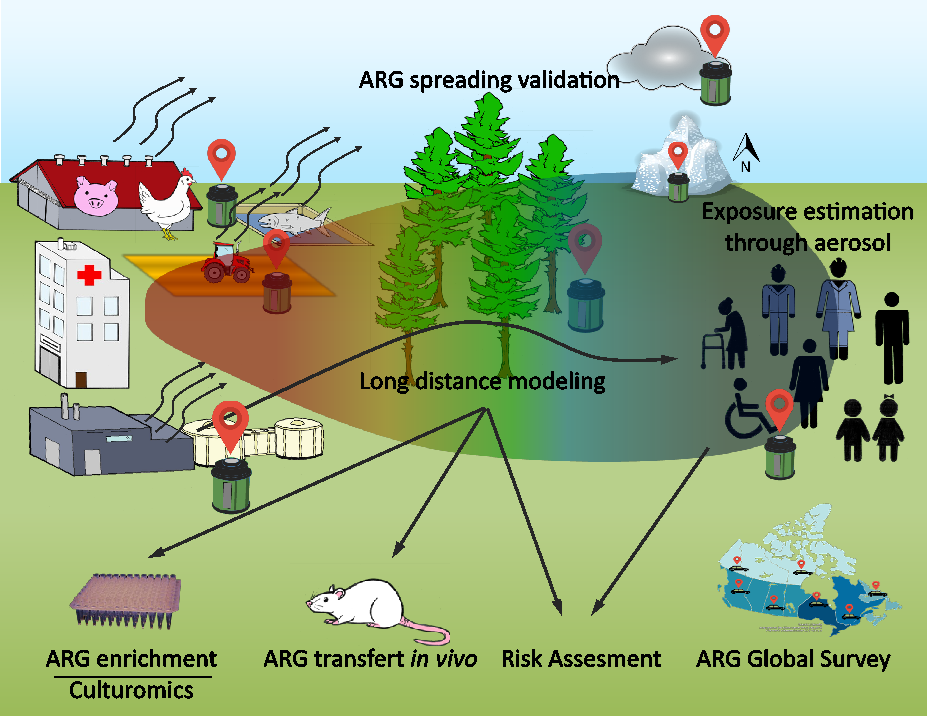In 2015, the World Health Organization (WHO) identified antibiotic resistance as a threat to the very core of modern medicine, urging member countries to take action in a multisectoral "one health" approach. Thus, in addition to wildlife, water and soil, which have already been the focus of several studies, we wish to study a route of dispersion never broadly addressed in understanding ARG transmission and fate: air. Indeed, air can contain microorganisms from different sources and transport them over very long distances. Understanding this missing piece of the puzzle will completely change the paradigm and bring key knowledge in ARG exposure, essential to design and develop exposure control strategies and more accurately assess risks. Our project therefore includes the collection of samples close to different emitting sources but also in places very far away from human sources, such as the far north and the upper atmosphere. The concentration and diversity of antibiotic resistance genes will be studied as well as their transfer potential. The data collected will be used to improve long-range transport predictions and risk prediction models and, if risk is present, to propose solutions.

